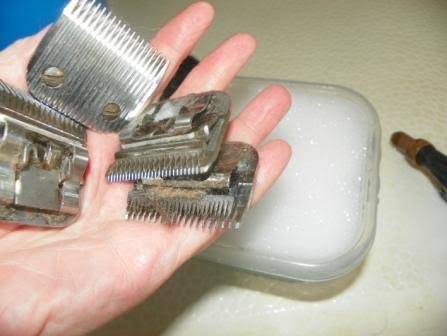Clippers are a go-to grooming tool for many people, providing a quick and convenient way to cut or trim hair. However, using clippers can sometimes lead to skin irritation, commonly known as clipper rash. This condition can be uncomfortable, causing redness, itching, and in some cases, tiny bumps or even inflammation. Understanding why clippers cause rashes and how to prevent and treat them is essential for maintaining healthy skin during grooming.
Why Clippers Cause Rashes
Several factors can contribute to clipper rash, including:
1. Dull Blades

•Clippers with dull or worn-out blades tug at the hair instead of cutting it cleanly, leading to irritation and microtears in the skin.
2. Dirty Clippers

– Clippers that are not properly cleaned can harbor bacteria, fungi, or other pathogens. When these come into contact with the skin, they can cause irritation, infection, or a rash.
3. Friction and Heat
•Clippers that heat up during prolonged use can irritate sensitive skin. Additionally, friction between the blades and the skin can lead to redness and discomfort.
4. Allergic Reactions
•Some people may have sensitivities to the metal in clipper blades (e.g., nickel) or to lubricants used on the blades.
5.Improper Technique
•Applying too much pressure, going over the same area repeatedly, or cutting against the grain can irritate the skin and result in a rash.
6.Pre-Existing Skin Conditions
•Individuals with sensitive skin, eczema, or conditions like folliculitis are more prone to developing rashes after using clippers.
How to Prevent Clipper Rash
Preventing clipper rash requires proper hygiene, maintenance, and grooming techniques. Here are some tips to help reduce the risk:
1. Clean Your Clippers Regularly

• After every use, clean the clippers thoroughly to remove hair, dirt, and bacteria. Use a clipper brush and disinfectant spray designed for grooming tools.
2. Keep Blades Sharp
•Replace or sharpen dull blades to ensure a clean cut without pulling at the hair or damaging the skin.
3. Lubricate Blades

•Use clipper oil to keep the blades moving smoothly and reduce friction. This also helps prevent overheating.
4. Use Proper Technique
•Shave or trim in the direction of hair growth to minimize skin irritation. Avoid pressing the clippers too hard against the skin.
5. Prepare the Skin
•Wash the area with warm water and a gentle cleanser before using clippers. This helps soften the hair and opens the pores.
6. Cool the Clippers
•If clippers get too hot during use, pause to let them cool down or use a cooling spray designed for grooming tools.
7. Moisturize After Grooming
• Apply a soothing, alcohol-free aftershave or moisturizer to calm the skin and reduce the risk of irritation.
8. Test for Allergies
• If you suspect an allergic reaction to the clippers or their lubricant, switch to hypoallergenic blades or lubricants.
Treating Clipper Rash
If you develop a clipper rash despite taking precautions, these steps can help soothe your skin and promote healing:
1. Clean the Affected Area
•Wash the area gently with lukewarm water and mild soap to remove any bacteria or debris.
2. Apply a Cool Compress
•Use a clean, damp cloth to reduce redness and inflammation.
3. Use Soothing Products
•Apply aloe vera gel, hydrocortisone cream, or an anti-itch lotion to calm irritation.
4. Avoid Further Irritation
•Refrain from shaving or trimming the affected area until the rash has healed.
5. Over-the-Counter Treatments
• Products containing salicylic acid or benzoyl peroxide can help treat mild inflammation, especially if the rash is due to folliculitis (infected hair follicles).
6. Keep the Area Moisturized
•Use a fragrance-free moisturizer to prevent dryness, which can worsen the rash.
7. Avoid Scratching
•Scratching can lead to further irritation or infection. If the itchiness is severe, consider using an anti-itch cream or taking an oral antihistamine.
When to Seek Medical Attention
While most clipper rashes are mild and resolve on their own, you should consult a healthcare professional if:
– The rash lasts longer than a few days or worsens.
– You notice signs of infection, such as pus, swelling, or increased redness.
– The rash is painful or spreads to other areas.
Alternative Grooming Options
If clipper rash becomes a recurring problem, consider trying alternative grooming methods, such as:
1. Electric Shavers
•These tend to be gentler on the skin compared to traditional clippers.
2. Depilatory Creams
•These chemically remove hair without the need for blades.
3. Laser Hair Removal
•A long-term solution for reducing hair growth in sensitive areas.
Conclusion
Clipper rash can be an annoying side effect of grooming, but with proper care and technique, it is largely preventable. By maintaining clean, sharp tools, prepping your skin before shaving, and soothing it afterward, you can minimize the risk of irritation. If the rash persists or becomes severe, don’t hesitate to seek professional advice to ensure your skin stays healthy and irritation-free.
Pingback: aftershave bumps Treatment